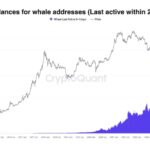Value is a key component in the Auction Market Theory process. It equates to 68.2% – 70% of the market’s trading activity on a given period whether it be daily or a composite. The term itself says a lot which is simply the market’s perception of what is a valuable price range. Value is an important tool to utilize each day as its telling us the underlying market’s context of acceptance.
In normal market conditions when there’s balance between buyers and sellers they are in agreement on the perception of value. Neither side is overpowering the other. If the market opens lower than what the market participants perceive as value, price will be bought up. If the market runs higher than what the market perceives as value, it will be sold. Very simple concept there. The confusion is determining when the market becomes imbalanced with either buyers or sellers.
An imbalance occurs when something has changed to the perception of value. This could be the result of an economic news release or unforeseen event. An example would be that an economic report comes out saying that the economy is far stronger than previously forecast. This will bring a major imbalance of buyers into the market as the perception of value is now greatly higher. When there is more buyers than sellers, price must continue to rise until more sellers are discovered. This can go on for a long time until the market reaches a level that is above what the market participants perceive as value once again.
A simple numerical example would be there are 5,000 market participants that want to buy into the market at the current market price. They do not want to wait to get in and are being aggressive with price accumulation by entering their orders via the market. As they’re entering their orders, there are not enough sellers to facilitate trade at the current price level(s). So price must move higher to continue to find participants willing to sell.
Let’s say for simple round numbers price is trading at 100 upon the news release. At 100, there were 500 sellers. Buyers quickly absorbed those sellers and moved up to 101. At this level, there were another 500 sellers. Again, buyers absorbed this up and quickly moved higher to 102. At 102, there were 1,000 sellers there. Again, buyers absorbed the sellers here and moved higher. At this point, the original buying demand is now at 3,000 buyers (assuming more have not stepped in). So from 102, sellers were absorbed and the market now must move to 103. At 103 through 105, there were only 500 sellers at these levels. This causing the market to spike higher as the buyers immediately ate up the sellers at those levels. Then at 106, the market finds 2,500 sellers. At this point, the buying demand has been let into the market. Then through all the commotion, some late comers of 1,000 step in to buy more and price makes moves higher to 107 but this time, there are 1,000 sellers at this level. The market is now finding a balance again. Then another 500 buyers that are very late to the party step in and buy more which takes the market up to 108 but at this level we have another 1,000 sellers. Now there are not enough buyers to fulfill the selling demand. So price falls back down one level to 107 and finds 200 buyers and no additional sellers. At that point, there are still 300 sellers looking to get their orders filled. Price drops down to 106, no buyers. 105, no buyers. then all the way down to 103 and buyers start stepping in again with 300. As you can see, the auction is now imbalance and buyers and sellers are trading evenly creating value.











Leave A Comment